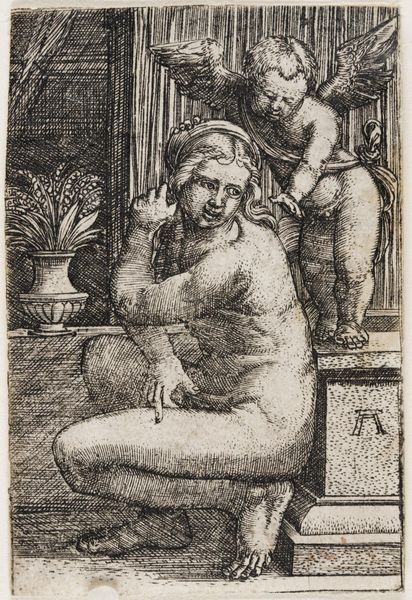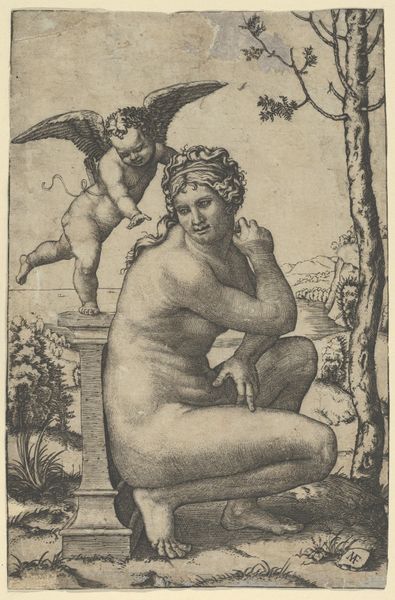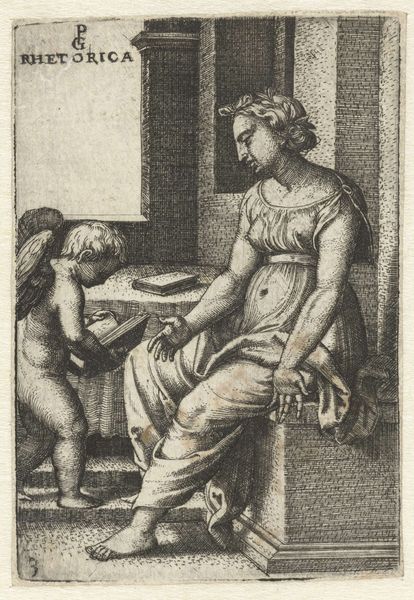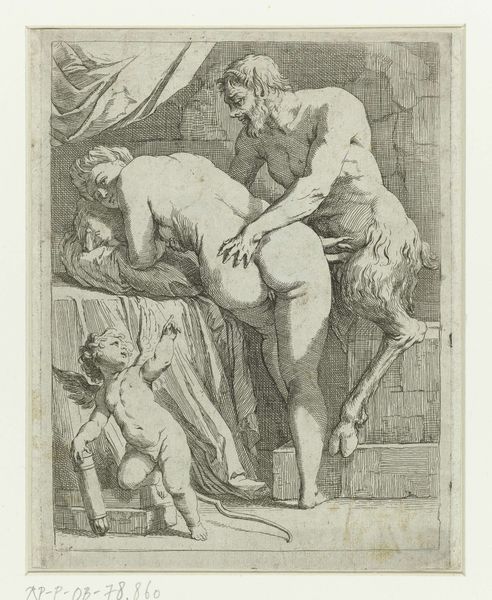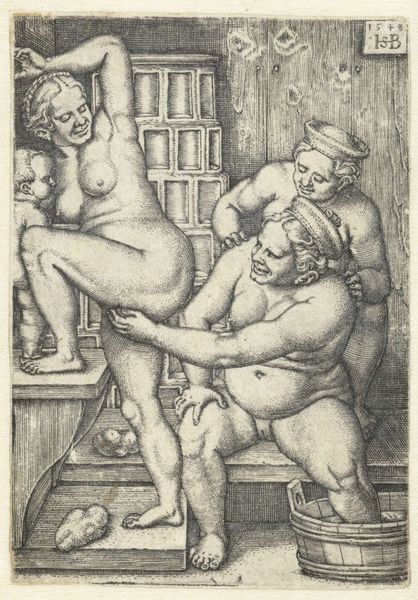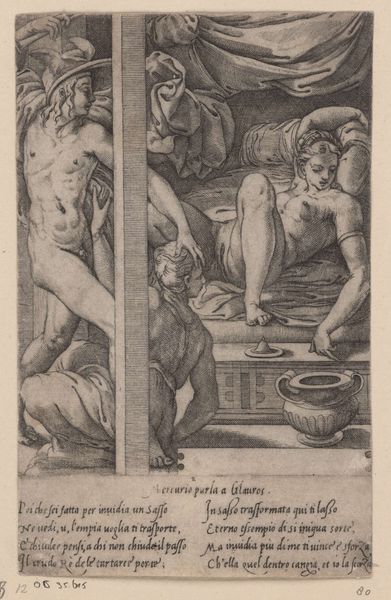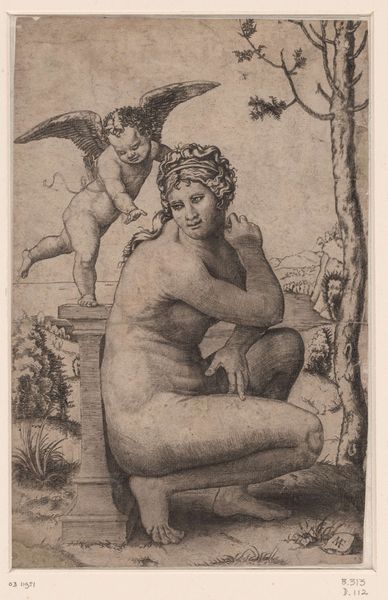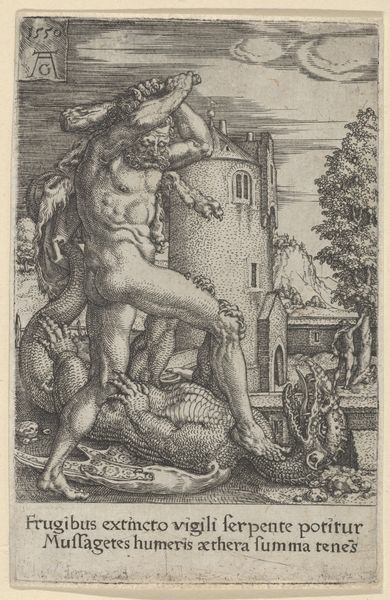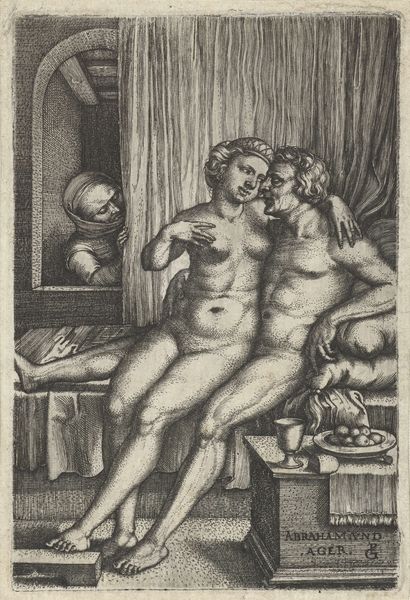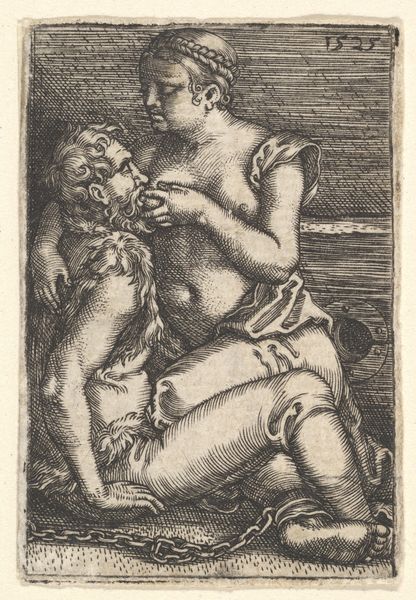
Dimensions: Sheet: 2 3/8 × 1 9/16 in. (6.1 × 4 cm)
Copyright: Public Domain
Editor: Here we have Albrecht Altdorfer’s “Venus Crouching,” an etching dating from sometime between 1500 and 1538. There’s a sort of... vulnerability to Venus that feels different from many depictions. How do you interpret this work? Curator: That vulnerability is key. Think about the context: this is the Northern Renaissance, where artists are grappling with both classical ideals and a burgeoning sense of individual selfhood. Venus here isn't the idealized goddess, untouchable and remote. She's caught in a private moment, almost contemplative. Editor: Yes, and the presence of Cupid almost feels… intrusive. Curator: Precisely! He highlights the male gaze inherent in these classical narratives. He’s positioned almost as a reminder of Venus's "duty," while her averted gaze and hunched posture subtly resist it. Do you notice the stark contrast between her soft, rounded form and the rigid, almost architectural lines surrounding her? Editor: Now that you point it out, it’s really apparent. It's like she's trapped within those lines. Is that a commentary on societal expectations? Curator: I think so. The work encourages us to question the power dynamics at play in the representation of women. The image becomes a dialogue, perhaps unintentionally, about the limitations placed upon women, even goddesses, by prevailing social structures. Editor: So it's not just about beauty, it's a critique of the systems of power that define beauty. Curator: Exactly. It forces us to reconsider our own gaze and the historical frameworks that have shaped our understanding of art and gender. Editor: This has really shifted my perspective, making me think beyond the surface. Curator: And hopefully inspires you to delve deeper into the stories behind the art we encounter every day.
Comments
No comments
Be the first to comment and join the conversation on the ultimate creative platform.
